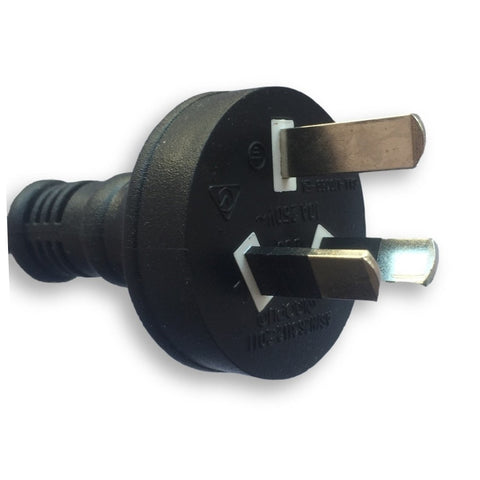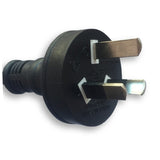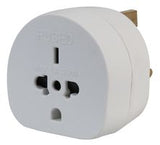
- Enables appliances with a 10A Australian/New Zealand (type I) plug to be used with a 13A UK (type G) socket.
- The unit has a 13A fuse, which is a requirement in the UK for safety.
What is a type I plug?
A type I plug is pictured and the following technical details may also help to identify it:
| Common Names | Configuration | Voltage | Max Current (Amp) |
|
Type I Australian AS/NZS 3112:2011
|
3 pins in a triangle set at 30 degrees to the verticle (2 pin version also used for double insulated appliances) Live and neutral pins: Rectangular, 6.35mm x 1.6mm, 17.35mm long Earth pin: Rectangular, 6.35mm x 1.6mm, 20mm long Polarised (plug can only be inserted one way around) |
220-240v |
10A |
What countries use a type I plug?
The plug is used in 22 countries. Please note that some countries may also use other types of plugs; if you are unsure, check out our Travel Adaptors for UK Visitors Guide.
American Samoa, Argentina, Australia, China, Cook Islands, Ethiopia, Fiji Kiribati, Namibia, Nauru, New Zealand, Papua New Guinea, Saint Vincent and the Grenadines, Samoa, Solomon Islands, Tajikistan, Timor-Leste, Tonga, Tuvalu, Uruguay, Uzbekistan and Vanuatu.
Why buy your travel adaptors from us?
All of our travel adaptors have been carefully selected following exhaustive tests, to ensure that they are entirely safe for use in the UK. They may not be the cheapest on-line, but we guarantee that they are the safest and most appropriate.
We began to sell travel adaptors after becoming concerned at the number of sub-standard unsafe adaptors being sold online, often with a number of seriously dangerous issues:
- The UK electrical system is the only domestic system in the world which is dependant on every plug or adaptor having it's own fuse. Without a fuse, the appliance will only be protected by the 32A socket circuit circuit breaker. As the appliance will be designed to be protected by a 10A or 16A fuse, if a fault develops the cable on the appliance, or the appliance itself may overheat.
- Unsheathed pins, increasing the risk of electrocution, particularly for children whose small fingers may be able to touch the live pin when the plug is only partially inserted.
- Non-shuttered sockets, enabling a child to insert a metal object into the live receptacle and receive an electric shock.
- Cannot safely manage the maximum current (power draw) that may occur from the rating of the socket they are recommended to be used with. This may lead to dangerous over-heating.
- Often do not connect the vital earth pin. Some appliances require an earth connection so that if a fault occurs and an external metal part becomes live, the earth wire safely conducts the electricity away, tripping the circuit breaker or blowing the fuse. If the earth is not connected, the metal will remain live, electrocuting anyone who touches it.






